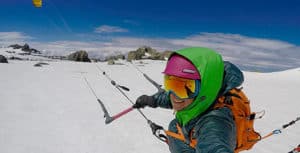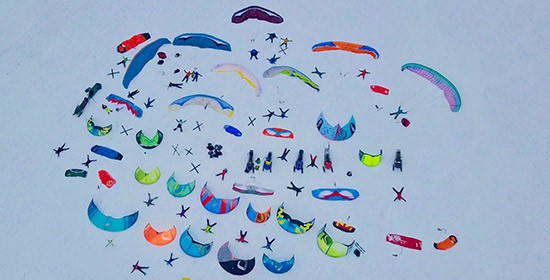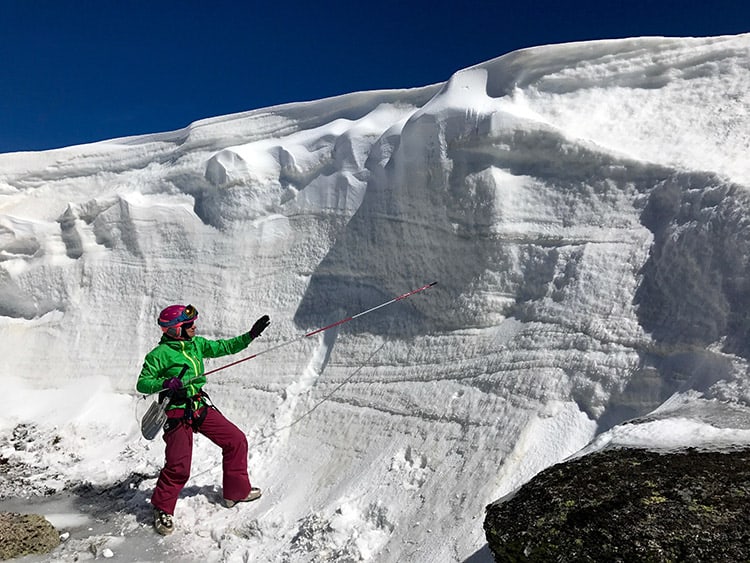Kiting on snow is the winter version of kiteboarding on water – but with a few subtle, and optional differences.
Whether you’ve been kiting for years or only just started, snowkiting will challenge your skills and ultimately improve your kiteboarding technique.
The principles of using the kite are the same but in very different terrain and temperatures which affect how you ride and what equipment you use.
Imagine a wind window that goes below your feet and kiting downwind but ending up uphill!
There are three parts to snowkiting:
Skiing or snowboarding | Backcountry skills and safety | Flying a kite
Put these skills together, and you’ll experience the exhilaration of safely kiting up, down and around snow-covered mountains.

Snowkiting is easy to learn, and it won’t take you long before you’re cruising around and with the right instruction, Jennie Milton world’s #1 snowkiter says;
“with a little bit of uphill technique and some practice, you’ll be able to use the kite like your own ski lift to escape the crowds and get high for some vertical turns”
In the early days of snowkiting, foil kites were the most common type; nowadays many kiteboarders use inflatable kites.
Pro’s and cons of foil vs inflatable kites for snowkiting
Inflatable kites have a bladder which keeps the ‘sail’ rigid and is pumped up and floats on the water when crashed.
PRO: Kites made for the waves can ‘drift’ so the power can be turned off as you carve or ‘surf’ the mountain
CON: Heavy, can pop and tear on ice, rocks and trees, need to carry a pump
Foil kites use the wind to inflate the leading edge and creates lift using the foil shape, many bridles support and stabalise these kites and are attached to 2, 3, 4 or 5 line systems.
PRO: Light weight and packs away easily at the top of mountain to ride back down un-assisted, can use smaller kite size, compact, no pump, easy launch and land.
CON: Does not ‘drift’ and are not great on the water as they can sink.

Many people think that snowboards are best for snowkiting because they’re similar to a kite board, but unless you have a split-board, we strongly recommend that you use skis as it’s much easier and quicker to learn the technique of snowkiting on skis.
Skiers will use skis fitted with touring bindings and require skins for uphill travel (as does a split snowboard).
Snowboarders will need snowshoes for hiking and also a way to carry their snowboard on a backpack.
Touring gear is needed to get to our launch areas and, if the wind dies, to get back home as well; this is where the backcountry skills come in.
Skinning techniques (for skiers or split-boarders), snow shoeing (for snowboarders), weather, forecasting, navigation, snow safety, route finding and more are invaluable and necessary skills needed to have fun and stay safe in the snow back country.
There are some subtle but very important skills you need to know which are different to water kitesurfing before you escape the crowds and head out to snowkite.
Make sure you get lessons from qualified kite instructors and back-country snow guides to stay safe and have fun.

Zephyr Tours run snowkiting weekenders in Thredbo NSW Australia and Alaskan snowkite adventures for kiters who want to ride mountains with professional snowkite and backcountry guide Jennie Milton.
